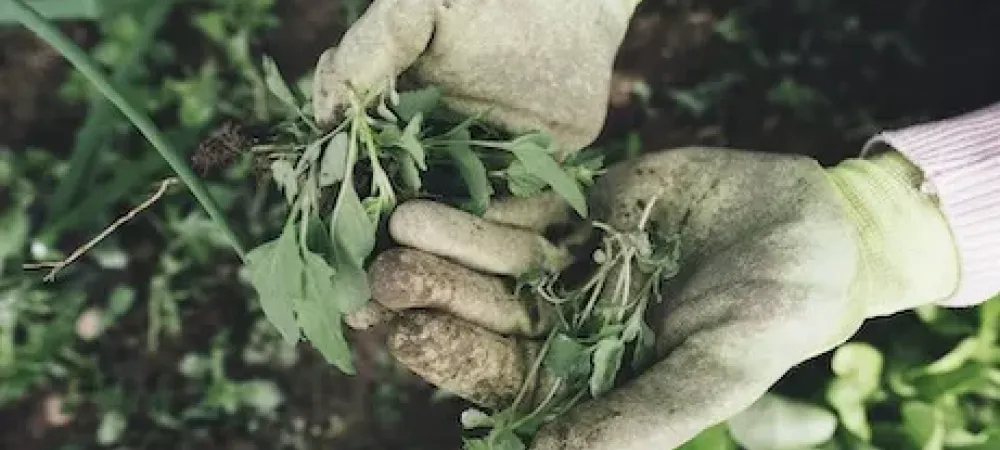The Most Common Minnesota Weeds

Most homeowners have accepted the fact that there is no winning the war on weeds. No matter how many you pull or spray they just never seem to go away. You can spend your entire summer battling weeds only to have your yard invaded again in the spring by a fresh army of weeds. Luckily, you can break this vicious cycle by following these weed control tips and sticking with it in the long run. If you can do that you can make weeds more manageable and even achieve the fabled weed-free yard.
Common Weeds in Minnesota
The most common types of weeds to find in a Minnesota lawn include:
- Annual Bluegrass
- Barnyardgrass
- Black medic
- Bull thistle
- Canada Thistle
- Chickweed
- Clover
- Crabgrass
- Creeping Charlie
- Dandelion
- Henbit
- Knotweed
- Lambsquarters
- Mallow
- Oxalis
- Plantain
- Poison Ivy
- Purple Deadnettle
- Purslane
- Smartweed
- Spurge
- Quackgrass
- Wild Garlic
- Wild Violets
- Yellow Nutsedge
Invasive Weeds in Minnesota
Minnesota is also home to several invasive weeds, which can be even more difficult to control. These weeds can quickly take over your yard, so it's important to be on the lookout for them and take action as soon as possible if you see them starting to appear. Prevention is the best defense against weeds
Milkweed
Minnesota is actually home to a number of different species of milkweed, which is the primary food source for Monarch butterflies. While having some milkweed in your yard is great for the environment, too much of it can be dangerous. Milkweed leaves and roots are toxic to humans and pets.
Dandelion
Dandelions are one of the most common weeds in Minnesota. They have a deep taproot that makes them difficult to pull up, and they spread quickly by seed. Herbicides often don't work on dandelions; herbicides will instead hurt the plants around them. Their deep roots take away nutrition from the surrounding plants. Dandelions are edible, but their bitter taste can make them unappealing.
Creeping Charlie
Creeping Charlie, also known as ground ivy, is a fast-spreading weed that can quickly take over your lawn. It's difficult to control because it produces so many seeds and has a creeping root system that can extend up to 20 feet. Creeping Charlie weeds are hard to get rid of because if you don't pull out the whole plant, you may end up dividing the roots and creating even more weeds.
How To Prevent Weeds In MN
Our grass can become very stressed in the summer. When grass becomes stressed by environmental factors such as heat, drought, and foot traffic, it turns brown and weak. Week grass allows weeds to plant their seed and flourish. They can quickly take over your lawn and flower beds. By keeping your grass well hydrated you can keep it thick and healthy which will prevent weeds from sneaking in and crowding it out.
Fertilize Your Lawn Properly
Do not use too much fertilizer in the summer unless your lawn really needs it. Improper fertilizing can damage the grass. For best weed-defending results, fertilize in the spring or fall. By keeping your grass fertilized it will remain thick and healthy and prevent weeds from growing.
Minnesota is notorious for its thick clay soils. These types of soil drain poorly and don't allow air and water to reach the grassroots. If your Minnesota lawn has this type of soil, you should take extra care when watering and fertilizing so that you don't damage the grass.
Grow Your Grass Out
When combined with proper irrigation and fertilization methods, letting your grass grow out a little is a fantastic way to prevent summer weeds. This encourages deeper root growth and thicker grass which prevents new weeds from germinating. Keep cool-season grasses around 3”- 4” long. Make sure your lawnmower blades are sharp so you aren’t tearing your grass which can cause brown and jagged tips.
Prevent Weeds With Spring Lawn Care
In the fall, weeds disperse their seeds over a large and wide area. In the spring they germinate when warm temperatures return. Spring is the best time to attack weeds. Try using pre-emergent herbicides and spraying them over your lawn. The chemicals will coat the weed seeds and prevent them from germinating. If done correctly you will see a huge difference in the number of weeds that pop up in your yard. Continue to follow the rest of the tips into the summer and you can have weeds totally under control.
How To Get Rid of Weeds In Minnesota
Weeds can be unsightly, but they can also take away valuable nutrients from your other plants. DIY methods of removing weeds can be helpful if you follow the directions and are aware of the weed you are treating. Here are some of the most effective weed treatments:
Pull Weeds Out By The Roots
If you happen to see weeds right now, stop them by pulling them out. The most important part is making sure to fully remove their roots, as many weeds, including dandelions, can grow back from just their roots.
Use Pre-Emergent Weed Spray In The Fall
When it comes to weed control, timing can be everything—many of the weeds that grow in the spring sprout from seeds deposited in the fall. Once the weather gets warm, these seeds germinate and start crowding out your grass before it has a chance to grow. Using a pre-emergent spray in the fall can help prevent this from occurring. That’s because pre-emergent sprays are used to prevent seeds from germinating by creating a barrier over your lawn, neutralizing the weed seeds, and stopping them in their tracks. Fall lawn care can set your yard up for success.
Continue To Mow Your Lawn In The Fall
Fall might be here, but that doesn’t mean you can stop mowing your grass just yet. Here in Minnesota, we typically have cool-season grasses, including fescues, ryegrasses, and Kentucky bluegrass. These grass types continue to grow until the daytime temperatures remain at a consistent 40 to 50 degrees. While specific heights vary, the typical range for cool-season grasses falls between one and four inches high. But be sure to mow your grass shorter for its final mow to help prevent snow mold from forming.
Continue To Water Your Minnesota Turf Until Your Grass Stops Growing
While it may not seem necessary because the temperatures are cooler outside, watering your grass is still important. The summer can put a lot of stress on your grass, and stressed turf can become an easy target for weeds hoping to squeeze in and crowd out your grass. Keeping it properly hydrated will help ensure your grass remains thick and robust, and healthy grass is much better able to fend off sneaky weeds that find their way in.
Fall Fertilization
During the fall, your grass will try to recover from a long hot summer, so you’ll want to give it a hand by providing it with added nutrients and macronutrients. This will help sustain it while it goes dormant through the long winter ahead. Depending on your soil pH and the specific type of grass you have on your lawn, you will need to get the appropriate fertilizer with the right balance. By keeping your grass fertilized it will remain thick and healthy and prevent weeds from hosting a complete takeover in the spring.
Use Mulch to Smother Out Any Potential Weed Growth
Mulch has many added benefits, but one of its most beneficial advantages is the way it helps smother and keep out weeds. Use a layer of mulch in your garden beds and around your trees and shrubs not just as a way to keep them safe from the elements of winter, but to help prevent added weed growth. Mulch acts as a barrier keeping out the air supply and sunlight weeds need to survive.
You can even use your own raked leaves as a layer of mulch. To do so, first cut down any existing weeds as close to the ground as possible. Next, spread the newspaper on the ground around the area you wish to spread the mulch. Then, shred your leaves and pile them into two or three-inch thick layers on top of the newspaper. You now have a layer of extra weed protection.
Use a Post-Emergent Weed Killer
The absolute best way to control broadleaf weeds that germinate in the fall is through a post-emergent weed killer. Post-emergent herbicides are sprays that target weeds that have already been established. The chemicals in the spray disable the plants’ ability to start photosynthesizing and kill the weed. As we mentioned earlier, weeds are still gathering up nutrients, and if they succeed, they will disperse hundreds of seeds across your lawn, lay in wait till the spring, and come to fruition. By using a post-emergent spray, you can stop them in their tracks and get a head start before the warm weather blesses us this spring.
Call Professional Lawn Technicians
The professional weed removers at Showcase Lawn Care know and understand the type of weeds that grow in Minnesota. We also understand that weeds can ruin the look of your lawn. Our highly effective weed control program offers a way to prevent and control weeds from taking over your yard. Our weed control program can prevent weeds early and stop them from spreading.
